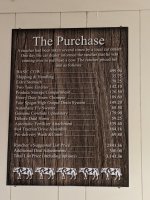I don't think you want to use Vulx in a hempy. Maybe with Coco but I can't see it holding, at all, in perlite. I suspect within a couple of waterings, all the Vulx would be in the res. Keep in mind, Vulx is essentially a rock dust product in a very fine powdered form.
It's best for soil grows, and I'm quite confident it WILL help with ProMix - just not ProMix that's already been amended with the high brix kit which (guess what? ) already has rock dust in the amendments!
) already has rock dust in the amendments! 
It's best for soil grows, and I'm quite confident it WILL help with ProMix - just not ProMix that's already been amended with the high brix kit which (guess what?
 ) already has rock dust in the amendments!
) already has rock dust in the amendments! 



 . Assuming that the product does not float, much of it should remain in the reservoir. And the reservoir is where the nutrients are, the water is, the most active roots are...
. Assuming that the product does not float, much of it should remain in the reservoir. And the reservoir is where the nutrients are, the water is, the most active roots are... .
.